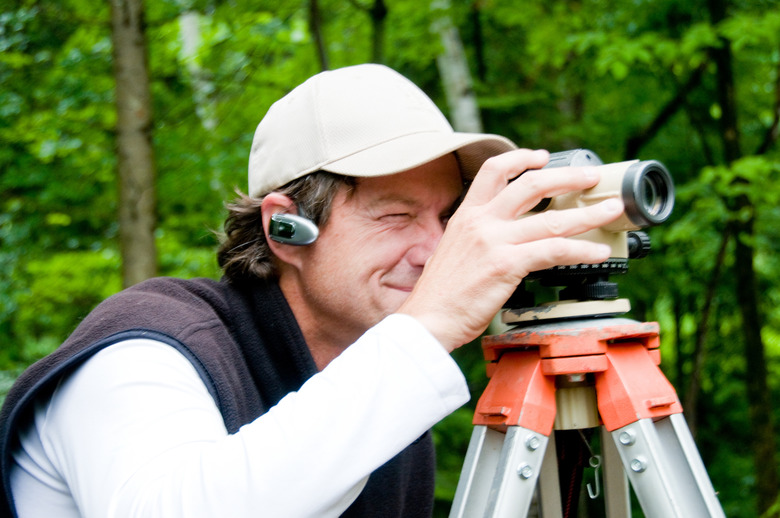How To Make A Simple Theodolite
First referenced in the 1500s in a surveying textbook by Leonard Digges, a theodolite is a precision instrument commonly used in surveying, to measure the height of objects that can't easily be measured, such as buildings. Theodolites can be expensive, however, you can make your own simple device for the price of a protractor, a fishing weight and a few bits and pieces that you probably have at home. You need a tangent table to help you do the simple calculation for determining the height of the building you're measuring.
Step 1
Cut a piece of cardboard approximately three times the size of your protractor.
Step 2
Drill a small hole in your protractor, 1/2 inch in from the center point of its longest edge.
Step 3
Align the center point with the center of one of the longest edges of the piece of cardboard and attach it with a push pin. Attach a small eraser to the pointed end of the push pin to hold it secure.
Step 4
Attach the fishing weight to one end of a piece of string and tie the other end to the push pin.
Things Needed
- Drill with fine drill bit
- Protractor
- Cardboard
- Scissors
- Push pin
- Eraser
- Fishing weight
- Thin string, 12-inches
TL;DR (Too Long; Didn't Read)
Hold the theodolite up to eye level so that your eye is following along the long edge where the protractor is attached to the cardboard. Align this with the top of the building you want to measure and read the angle off at which point the string crosses the protractor. Use a tangent table to look up the angle. Multiply this by the distance you are standing from the object.
Cite This Article
MLA
, Helen Harvey. "How To Make A Simple Theodolite" sciencing.com, https://www.sciencing.com/make-simple-theodolite-11414526/. 24 April 2017.
APA
, Helen Harvey. (2017, April 24). How To Make A Simple Theodolite. sciencing.com. Retrieved from https://www.sciencing.com/make-simple-theodolite-11414526/
Chicago
, Helen Harvey. How To Make A Simple Theodolite last modified March 24, 2022. https://www.sciencing.com/make-simple-theodolite-11414526/
